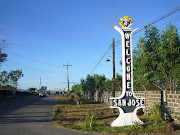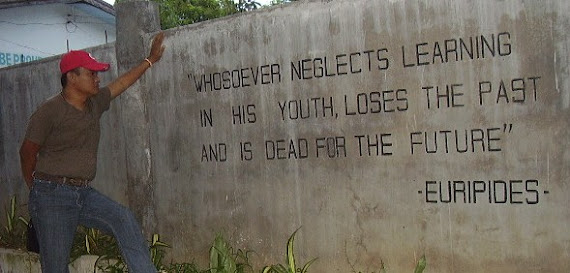This
is the first story. Silly as a little child, I was made to believe that there’s
a certain portion in the mountainous part of Sablayan that, according to some
accounts, “magnetized” the Philippine Airlines’ DC3 Flight No. 785 which
crashed into a ravine of the northern slope of Mount Rabañgan in the 60s. The
mountain is believed to be part of Sitio Yapang and inside the property of the
Sablayan Penal Colony just like the marvelous Libuao Lake shown in the above photo.
It was the most tragic air accident in Occidental Mindoro’s history. It happened
Wednesday morning, June 29, 1966 when a horrible event took the lives of 26 people
including its 4 flight crews. I was only 5 years old that time but stories
about the plane crash survived for decades especially in San Jose where many of
the victims are residing or working, my mother told me.
Based
on the investigation conducted by authorities, the PAL DC-3 took off from
Mamburao Airport, which was actually came from Manila before its stop-over at
the capital town, and was bound for San Jose Airport. Official document has it
that the probable cause of the accident was the "misjudgment of the terrain clearance of which resulted (in) the
collision with trees." One of the two lucky survivors is an
Engineering student at FEATI University and a son of a farmer from Barrio Bubog
named Federico Aguilar. The other survivor is a farmer also from San Jose identified
as Donato Magpiling. The ill-fated aircraft which was found by the rescuers beyond
repair first flew in 1944 was a twin engine Pratt & Whitney R-1830-92. According
to Rodolfo M. Acebes in his book “Stories of 100 Families”, “He (Aguilar) survived because of the fresh
water he drank from the Rayusan River.” Aguilar’s story instantly became talk
of the town in Bubog, the place where I grew up. How he survived for days with
wounds all over his body before he was found by the rescuers.
My
childish imagination then made me believe in the urban legend saying that there
is indeed literal “magnetic” forest in Sablayan causing the tragedy. But now
that I am a grown-up man based in this town, I am still a believer of
Sablayan’s magnetism but in its figurative sense. This paved the way to my
second story of the town’s “magnets”.
My
definition of “magnetism” here simply means “attraction”. Every single thing in
the world, people, events and places included, has the capacity to attract or to
magnetize both “gold” and “garbage”. Or garbage that looks like gold!
As
reported by the Tourism Development and Promotion Division headed by Ms. Sylvia
T. Salgado, 3 national media networks stormed this year to Sablayan to feature
the town’s tourist destinations. We, without doubt, have “magnetized” those
journalists to introduce to the world the amazing-ness of this municipality
aspiring to be the economic and political center of the province in the years
to come. Our Tourism Office is under the Municipal Environment and Natural
Resources Office (MENRO). But we are not complacent for we are still aiming to
“magnetize” many investors, tourists, local entrepreneurs including projects
and programs coming from public and private entities here and abroad and forge sustaining
partnership with them as envisioned by Mayor Eduardo B. Gadiano and the rest of
the LGU officials.
But
magnetism isn’t just a phenomenon. Any human organization has to work for it. Aside
from places and events, economic opportunities and richness of culture and
natural resources, the practice of good governance can be a magnetic material
as long as its people mutually has these: vision, expectation, contribution and
commitment. To paraphrase an old saying, this kind of magnetism isn’t like that
of a vacant lot or a vacant mind. The lot filled with “majoras” (improvements) won’t attract garbage!
Anything
we have in common is a potential magnetic field, so to speak…
-------
(Photo : Sablayan File)
.jpg)






No comments:
Post a Comment